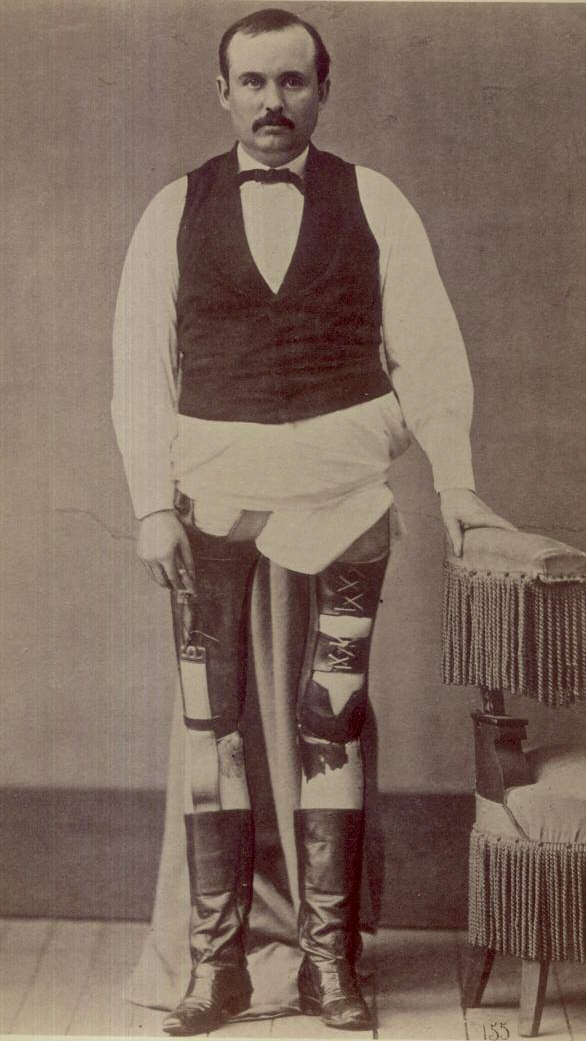Wounded Soldiers
Wounded Soldiers
by David McCormick
 Recollecting his experience in the Battle of Philippi, Va., during the American Civil War, Confederate Pvt. James E. Hanger said: “The Federals were moving in on us … and were entirely too strong.” His dream of serving in the Churchville Cavalry of the Confederate Army was quickly taken from him that third day of June, 1861. Union artillery let loose two canister shots followed by a grapefruit-size, 6-pound solid shot that struck Hanger, shattering his leg below the knee.
Recollecting his experience in the Battle of Philippi, Va., during the American Civil War, Confederate Pvt. James E. Hanger said: “The Federals were moving in on us … and were entirely too strong.” His dream of serving in the Churchville Cavalry of the Confederate Army was quickly taken from him that third day of June, 1861. Union artillery let loose two canister shots followed by a grapefruit-size, 6-pound solid shot that struck Hanger, shattering his leg below the knee.The leg, so badly injured, was amputated 7 inches below the hip. The removal of Hanger’s leg was one of the first two amputations of thousands performed during the war, but probably of greater import was that the loss of Hanger’s leg would directly affect the thousands who followed with empty sleeves and tattered trousers [see sidebar, page 51].
During the Civil War, the number of amputations was about 50,000, compared to about 16,000 during World War II. The high incidence was perhaps due to a number of causes. The biggest culprit, the lead minié ball, was at its deadliest when tearing into tendon and shattering bone. Add to this the better accuracy afforded by the rifled barrel.
These two factors, when combined with outmoded European military tactics that had soldiers advancing on the enemy shoulder to shoulder, accounted for the large number of casualties. The high numbers have often been attributed to field surgeons’ inexperience and time constraints. Lack of experience, however, cannot be laid directly at the surgeons’
feet. At the time, dissection of human bodies was illegal. Of the 11,000 Union doctors enlisted to serve the troops, 500 had performed surgery. The situation the Confederates were facing was even more disquieting: Only 27 of their 3,000 field physicians had any operating room experience. (Read more about Civil War amputees)


